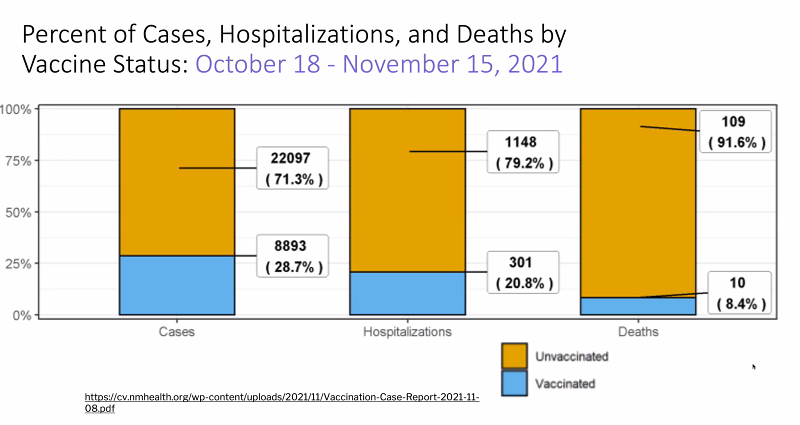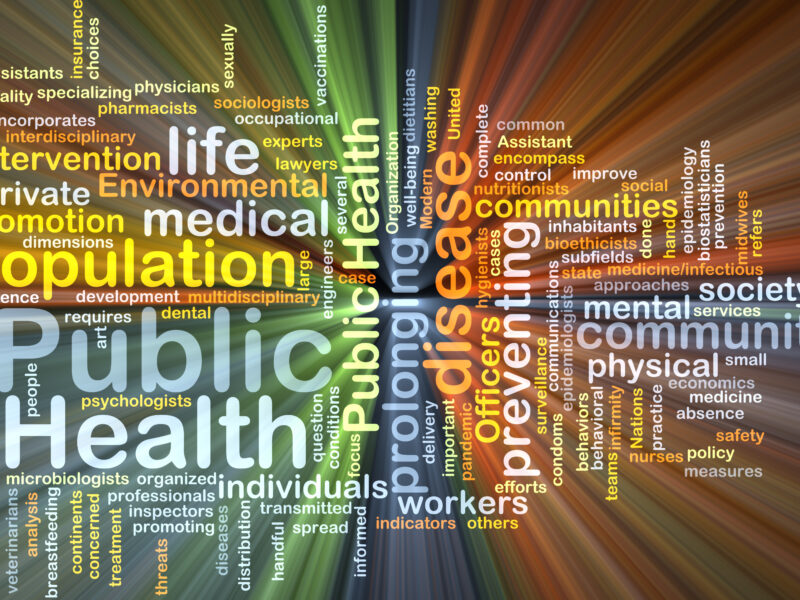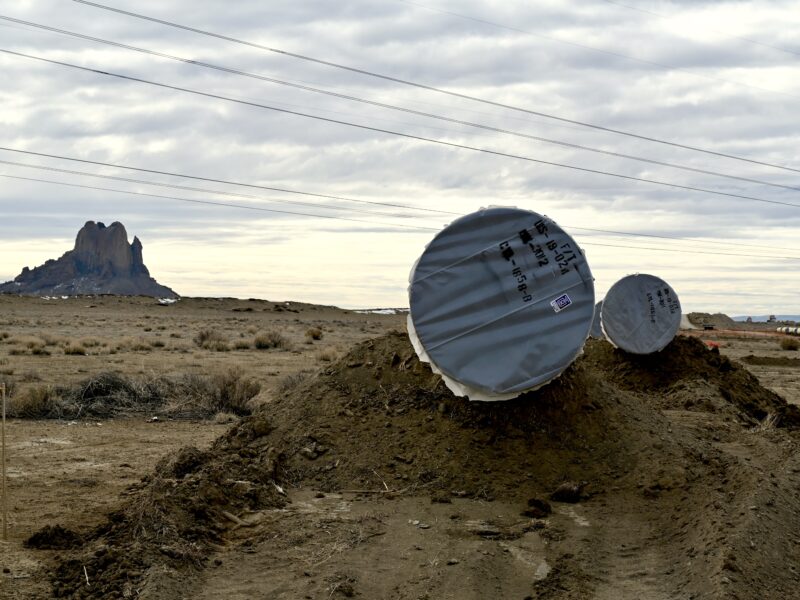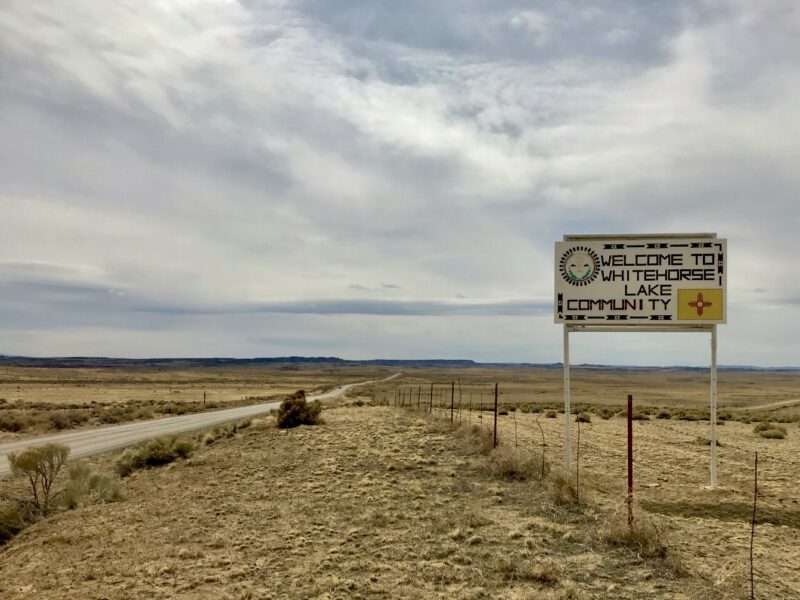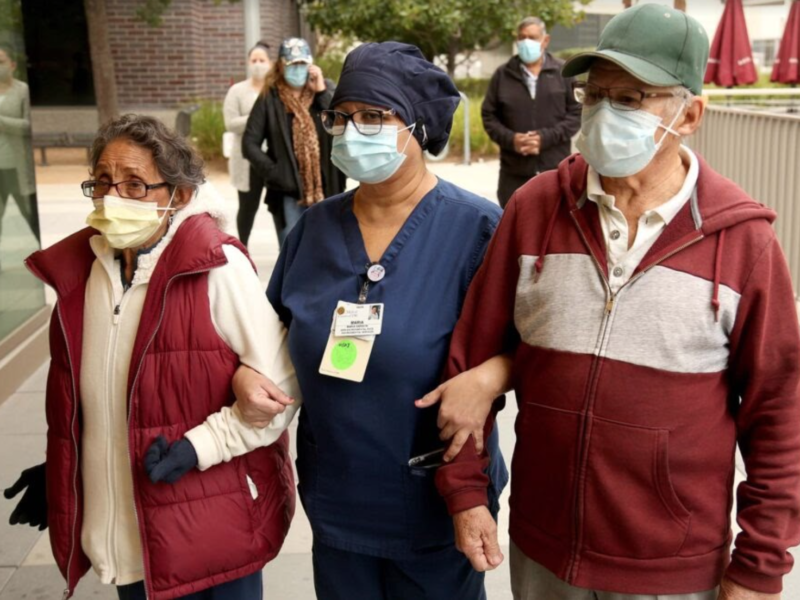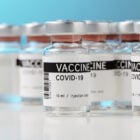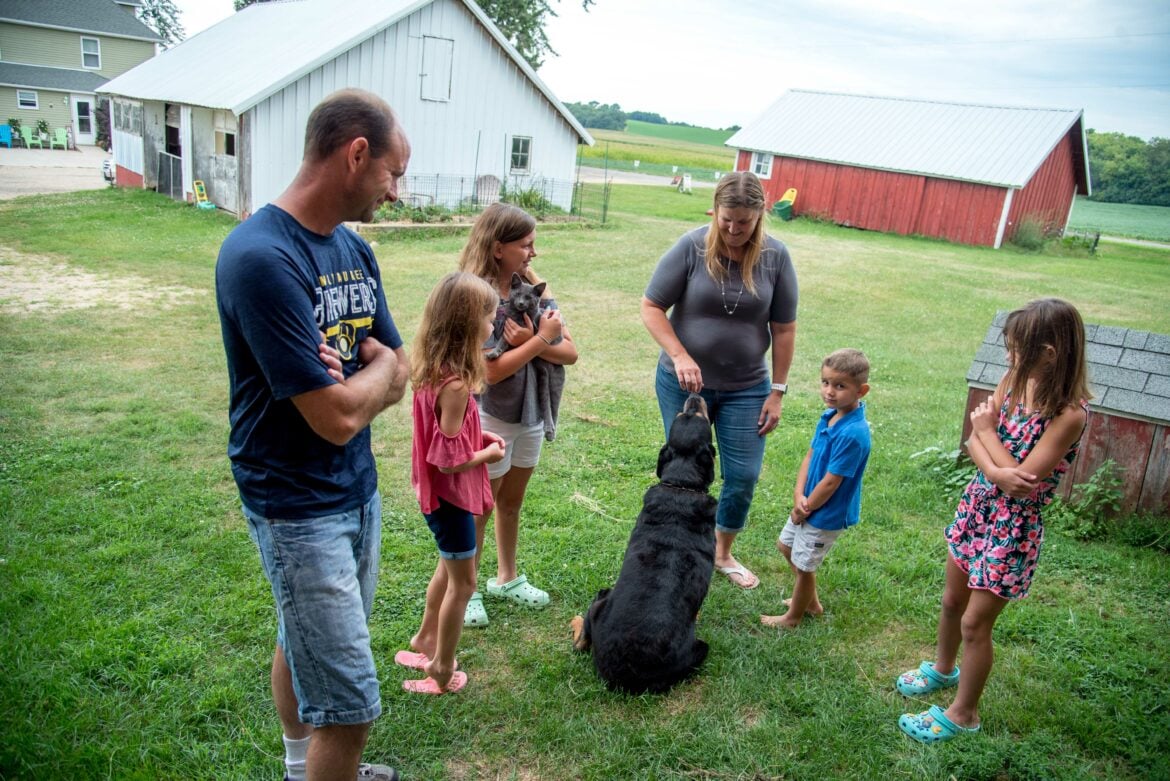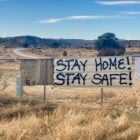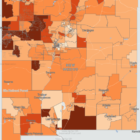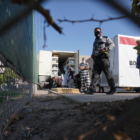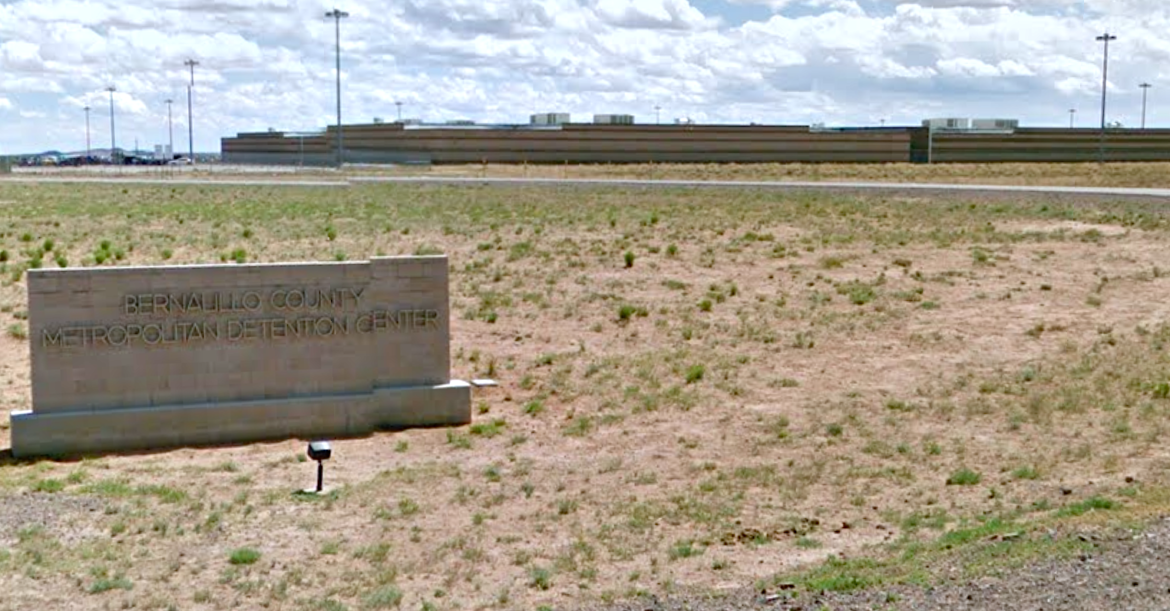At a normal meeting Friday between state health officials and representatives of local and tribal health councils, a hastily changed agenda signaled the urgency of the worsening COVID situation in New Mexico. More than 100 people across the state attended Friday afternoon’s ZOOM call. Despite nearly 74% of New Mexico adults being fully vaccinated, which is relatively high, New Mexico appears headed toward another crisis stage of COVID. The rolling 7-day average of COVID cases in New Mexico apexed a year ago and waned during spring and summer of 2021, as seen in the image below. But the cases have crept upward since August and now seem to be hitting worrying levels.
Covid-19
It’s unclear whether vaccines are reaching hardest hit New Mexico communities
|
As New Mexico continues to amp up vaccine distribution, health officials don’t appear to be allocating a greater number of doses to those living in low-income areas that have been hit hardest by the COVID-19 pandemic. Those areas include McKinley County, the southern border region, and communities in central New Mexico where some of the highest rates of positive cases, hospitalizations and deaths have occurred.
Other than some targeted distribution to congregant facilities like nursing homes and prisons, as well as health care and medical workers, the state is taking an approach of calling up individuals who’ve registered on the state vaccine portal. People are prioritized based on various risk categories, such as age, underlying conditions, or being an essential worker. “…basically we’re randomizing them to see who will receive that vaccine dose,” New Mexico Health Secretary Dr. Tracie Collins said at a Wednesday afternoon press conference. It’s an approach designed to ensure there is no favoritism in vaccine access, Collins said.
But the hardest hit populations are low income communities that are disproportionately Native American and Latino, Black and other communities of color, and there is currently no publicly available information about whether or not vaccine distribution is sufficiently reaching these groups.
Covid-19
Rural schools battled bad internet, low attendance in the pandemic. Will spring semester be better?
|
This story is part of a collaborative reporting project including New Mexico In Depth called “Lesson Plans: Rural schools grapple with COVID-19”. Andy and Amy Jo Hellenbrand live on a little farm in south-central Wisconsin where they raise corn, soybeans, wheat, heifers, chickens, goats, bunnies, and their four children, ages 5 to 12. For the entire fall semester, the quartet of grade school students learned virtually from home, as their district elected to keep school buildings closed. That has put a strain on the family, as well as the childrens’ grades and grammar. “I definitely feel like they’re falling behind,” said Amy Jo Hellenbrand.
Covid-19
A historic year, learning loss threatens recent educational gains
|
Even by the most optimistic standards, the logistics of learning in 2020 have been difficult, if not close to impossible, for a significant number of New Mexico students. Technological challenges have combined with trauma caused by COVID-19’s deadly rampage through hard-hit populations, especially the state’s Indigenous communities, to disrupt classrooms and educational plans. More than 32,000 students — or one of every 10 enrolled in public education statewide — have been referred to a state-sponsored coaching program, many for being disengaged, regularly missing classes, or in danger of failing one or more classes. Less than a quarter are participating, however. And more than half of those, or 5,173 students, are in need of the most help, according to the state education officials, meaning they endure significant on-going barriers and are receiving regular interventions, sometimes daily.Public Education Secretary Ryan Stewart and his staff didn’t mince words about the severity of the challenge in a December presentation of the education agency’s 2022 budgetary request to state lawmakers.
Learning losses caused by the pandemic — particularly for at-risk students, which make up a majority of New Mexico’s student population — will likely weaken already low student outcomes, according to the 13-page memo.“Additionally, school closures and remote learning have had a dramatic impact on enrollment in many school districts, leading some school district leaders to worry about the pandemic’s impact on their school district’s finances,” they added.The state education agency went on to ask the legislators for $4 million in emergency funds, citing the possible need for additional grants in light of enrollment shifts in school districts and increased costs related to the Covid-19 pandemic.
COVID disparities force a public health reckoning
|
The coronavirus feels the way it looks in widely circulated images, said Cleo Otero: like a thorn. “That’s how it felt inside my body, especially my lungs. It was painful. Like it was scratching the inside of your body. I could really literally feel the virus inside my body.”
Otero’s first clue she was sick came at the laundromat in Albuquerque where she usually buys a bag of spicy chips as she waits on her clothes.
Images show reality in El Paso that must be seen
|
Workers and guards outside an El Paso mobile morgue during the COVID-19 pandemic. Claudia Silva/New Mexico In Depth
It felt surreal pulling into the cemetery next to the University Medical Center of El Paso. Large trailers with doors flung wide open are lined up outside the medical examiner’s office tucked away just down the street. The trailers house rows of shelves holding the overflow of those who have died of COVID-19. As Texas has reached over 1 million cases, the border city of El Paso has become a hot-spot, some calling it the new New York, with one of every 20 to 30 people estimated to be positive.
As the situation has worsened the city’s prisoners have been asked to help handle the dead.
Uncategorized
Governor orders New Mexicans to shelter in place
|
Starting Monday, in an acknowledgement of how bad things have gotten, Gov. Michelle Lujan Grisham announced today during an online update that we’re returning to sheltering in place. That means everyone must stay home unless they work in an essential business, or need to go out for groceries or medical care.
And she announced she’s calling the New Mexico Legislature into a special session within days to help New Mexicans struggling to keep food on the table, pay their bills, and stay in their homes. And to help businesses survive.
We’re experiencing the greatest emergency our country has seen, Lujan Grisham said, and with no federal guidance and support, that means she has to take action, dismissing notions that she should follow the lead of other states that aren’t closing businesses, she said.
The overwhelming need, right now, she said is for New Mexicans to shelter in place to fight the spread of the virus.
That means her own family isn’t getting together in person for Thanksgiving, she said, so that they’ll be intact and whole for the Thanksgivings to come.
But far too many families will come together, and will then come together again for a funeral, she said. “It’s not worth the risk. It’s not worth the risk.”
Those were my thoughts exactly a week ago when I pulled the plug on visiting my family for Thanksgiving.
Covid-19
Gov to New Mexicans: “November is done.” COVID’s big surge
|
While a lot of us are caught up in watching the vote count in the presidential race this morning, the disturbing rise in COVID-19 infections in New Mexico this week has reminded me that who will lead this country for the next four years isn’t the only major story. “November is done,” Gov. Michelle Lujan Grisham said yesterday during an online COVID media briefing.
During the briefing, the daily update on infections and deaths popped into my inbox announcing 862 new cases and 23 deaths, jarring me out of a now familiar routine of tuning into COVID briefings and, this week, monitoring election results.
Yesterday’s death count far surpassed the previous record of 14 deaths in a single day. What Lujan Grisham meant by saying that November was done, was that those fatalities were seeded in October or September and now all we can do is make it through what will likely be a grim November.
We are experiencing a horrific surge in COVID cases, throughout the state, far exceeding last spring, or the second peak in the summer.
The backdrop is a hospital system busting at the seams. The ICU beds in the state are perilously close to being completely maxed out. The following graphs from yesterday’s briefing show that capacity could be exceeded in one to two weeks. When that happens, the hospitals will move into crisis standards of care.
Covid-19
COVID complicates college prep for Native students
|
It’s a crisp late afternoon in Northern New Mexico, the kind of day that invites you to drive with your windows down or chop firewood in preparation for winter.If this were a normal year, Marisa Gutierrez might not register the seasonal change. The 18 year old is usually beyond busy. But this is 2020, and the high school student body president, cheerleader, community organizer, and aspiring valedictorian is feeling cooped up.And pondering lost opportunities.Earlier this year the pandemic killed a conference she had hoped to attend at Emory University in Atlanta for Native American students across the country.The teenager, who is a member of the Santa Clara Pueblo, one of New Mexico’s 23 Native American tribes, yearned to visit an out-of-state college campus.“I have been on college campuses before but nothing outside of New Mexico,” she said. She felt for her peers, too, knowing the missed opportunity it likely represented for many.“I’ve had the advantage and opportunities to see a bunch of places, but a lot of people, specifically Natives, aren’t usually accustomed to looking outside of their Pueblo or outside of their tribe,” she said. “And so I think that would have been a great opportunity for them to experience, kind of, life outside the rez.”
But the missed opportunity hasn’t knocked the high achieving Gutierrez off her quest.
Covid-19
The virus’ wake-up call for New Mexico
|
Nearly seven months into a mostly successful fight with COVID-19, New Mexicans are having to digest the unwelcome news that the virus isn’t going anywhere. In fact, it seems to have discovered its second wind.Twice in as many days this week the number of daily infections has shattered New Mexico’s single-day record. And as we did in March and April, suddenly we’re hearing that COVID-19 might overwhelm our state’s health care system if we’re not careful. Hospitalizations have jumped 74% since Oct. 1 and some intensive care units in Albuquerque are already full.Gatherings of more than five people will be illegal starting today and establishments that sell alcohol must close at 10 p.m., according to a new public health order from Gov. Michelle Lujan Grisham that extends through Nov. 13.In addition, New Mexico will require travelers coming from high-risk states to quarantine for 14 days instead of allowing them to avoid the isolation if they test negative, as was the previous practice.“I cannot be more clear: The moment to turn the tide has to be right now, immediately, or else we face accelerating significant illnesses and needless deaths for hundreds of New Mexicans,” Gov. Lujan Grisham said in a press release.
Covid-19
NM jails report 900 new virus cases since June as population numbers tick back up
|
New Mexico’s jail population dropped by a third earlier this year as officials agreed to incarcerate fewer people to avoid the spread COVID-19. But the population has crept back up since June and infections have soared among both inmates and staff from 37 cases by early June to nearly 970 as of September 25, according to government data reviewed by New Mexico In Depth. It’s not clear whether more crowded jails, along with their decreased chances for social distancing, has spiked the case numbers. Virus cases have dramatically increased in a handful of jails in counties where cases have remained stubbornly high outside the walls — and officials say inmates are entering the jails already infected, identified by testing as they are booked.
But the increases in cases and populations have renewed discussions about how to ensure the virus doesn’t spread further inside jails and the communities they serve. Officials hope to repeat the success of the low infection numbers through the pandemic’s first few months, when law enforcement, judges, jail administrators, prosecutors and defense lawyers cooperated to keep jail populations down.
